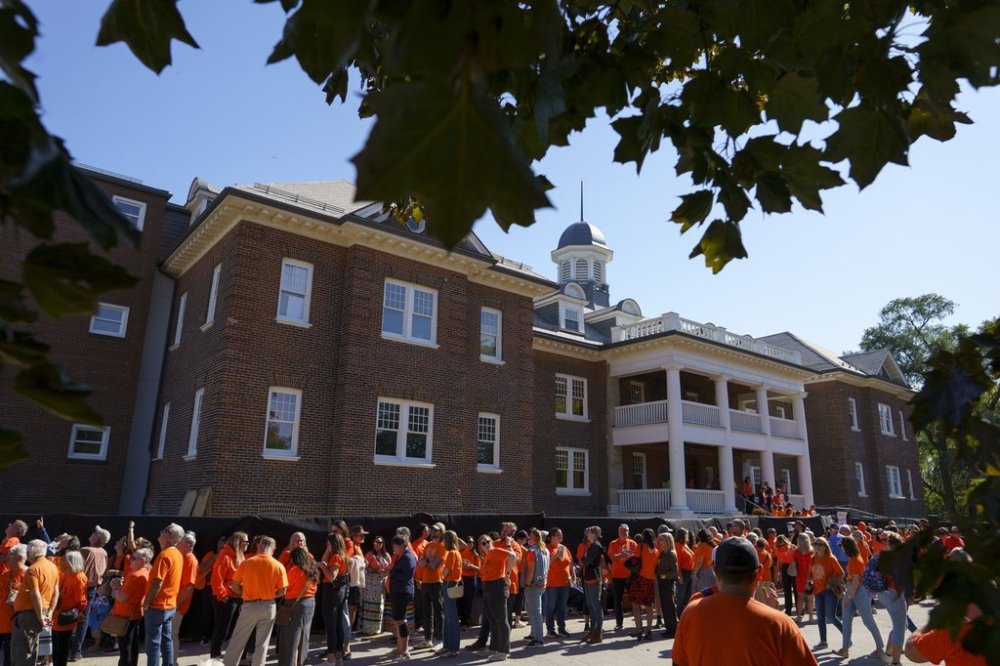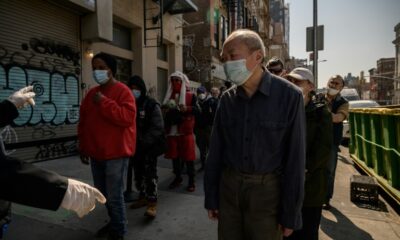Science
Indigenous Leaders Confront Misrepresentation of Residential School History

Indigenous Peoples in Canada commemorated the National Day for Truth and Reconciliation this week while facing ongoing challenges from public figures who downplay the history of residential schools. These statements, which claim the history has been exaggerated or falsified, pose significant obstacles to reconciliation efforts across the nation.
The Truth and Reconciliation Commission, established through a legal agreement between the federal government and survivors, concluded that the primary objective of residential schools was to erase Indigenous cultures. From 1857 to 1996, approximately 150,000 Indigenous children were compelled to attend these church-run, government-funded institutions. Many were prohibited from speaking their languages and were often subjected to abuse, isolated from their families and communities. Reports suggest that an estimated 6,000 children died while attending these schools, although experts from the National Centre for Truth and Reconciliation indicate that the true number could be significantly higher.
The federal government officially designated September 30 as the National Day for Truth and Reconciliation in 2021, following preliminary findings from a ground-penetrating radar survey conducted by the Tk̓emlúps te Secwépemc First Nation, which identified around 200 potential unmarked graves at a former residential school in Kamloops, British Columbia.
In the lead-up to this year’s commemoration, several prominent individuals and political figures made online statements that downplayed the historical significance of residential schools. On September 30, former British Columbia Conservative MLA Dallas Brodie posted a trailer for a video titled “Making a Killing: Reconciliation, Genocide and Plunder in Canada.” Brodie had previously been expelled from the Conservative Party for mocking former residential school students’ testimonies regarding child abuse.
In another incident, a staff member of the Conservative Party of British Columbia was dismissed after labeling the Survivors’ flag—a symbol meant to honour those affected by the residential school system—a “disgrace” and a “fake” flag that perpetuates “untruths” about Canadian history. Additionally, Maxime Bernier, leader of the People’s Party of Canada, took to social media to assert that “no bodies were found” and that claims of genocide associated with residential schools are a hoax.
In response to Bernier’s comments, Mandy Gull-Masty, the Minister of Indigenous Services, condemned his remarks “in the strongest possible terms,” emphasizing a lack of humility and respect in his statements. The Assembly of First Nations reported that they referred Bernier’s post to the Royal Canadian Mounted Police (RCMP) as potential hate speech, highlighting the ongoing discrimination faced by First Nations in Canada.
Bernier, in a subsequent statement, accused Cindy Woodhouse Nepinak, National Chief of the Assembly of First Nations, of disregarding truth and reconciliation. He dismissed Gull-Masty’s letter as irrelevant, suggesting that questioning the narrative surrounding residential schools threatens the flow of government funding.
Historian Sean Carleton characterized denialism regarding residential schools as a tactic to distort factual accounts, thereby undermining public trust in survivor stories and the reconciliation process. Carleton stated, “It’s a constant sowing of seeds of doubt in things that we don’t need to be doubtful about, because we’ve already established the truth about them.”
In Parliament, Leah Gazan introduced a private member’s bill aimed at criminalizing residential school denialism, which unfortunately did not progress before the spring elections. The bill proposed penalties of up to two years in prison for individuals promoting hate against Indigenous Peoples by denying or downplaying the history of residential schools. A similar law to combat Holocaust denialism was enacted in Canada in 2022.
Gazan expressed her commitment to advancing the legislation, noting that survivors are adversely affected by the ongoing denial of their experiences. “If we can’t keep survivors safe, we’ve got a problem,” she said. She also highlighted that the Truth and Reconciliation Commission had been documenting unmarked graves long before 2021, citing reports from former special interlocutor Kimberly Murray.
Former Minister of Crown-Indigenous Relations Marc Miller reflected on the shift in public awareness regarding the history of residential schools, stating that many Canadians became aware of these events only after the findings in Kamloops. He noted that some individuals seized on inaccuracies in reports to claim that no harm had come to children in these institutions.
Miller shared poignant stories from survivors, including one who asked him to sit on her right side because of past abuse from a teacher. He conveyed the gravity of their experiences, asserting, “These are not fictitious events. When you talk about denialism, you’re telling these people that what happened to them never occurred.”
This ongoing dialogue highlights the need for continued education and respectful acknowledgment of the painful history surrounding residential schools in Canada. As communities strive for reconciliation, the importance of honoring survivor stories and confronting denialism remains paramount.
-

 Lifestyle1 month ago
Lifestyle1 month agoWinnipeg Celebrates Culinary Creativity During Le Burger Week 2025
-

 Health2 months ago
Health2 months agoMontreal’s Groupe Marcelle Leads Canadian Cosmetic Industry Growth
-

 Science2 months ago
Science2 months agoMicrosoft Confirms U.S. Law Overrules Canadian Data Sovereignty
-

 Education2 months ago
Education2 months agoRed River College Launches New Programs to Address Industry Needs
-

 Technology2 months ago
Technology2 months agoDragon Ball: Sparking! Zero Launching on Switch and Switch 2 This November
-

 Science2 months ago
Science2 months agoTech Innovator Amandipp Singh Transforms Hiring for Disabled
-

 Technology2 months ago
Technology2 months agoGoogle Pixel 10 Pro Fold Specs Unveiled Ahead of Launch
-

 Science2 months ago
Science2 months agoChina’s Wukong Spacesuit Sets New Standard for AI in Space
-

 Technology2 months ago
Technology2 months agoWorld of Warcraft Players Buzz Over 19-Quest Bee Challenge
-

 Science2 months ago
Science2 months agoXi Labs Innovates with New AI Operating System Set for 2025 Launch
-

 Business2 months ago
Business2 months agoDawson City Residents Rally Around Buy Canadian Movement
-

 Business2 months ago
Business2 months agoNew Estimates Reveal ChatGPT-5 Energy Use Could Soar
-

 Technology2 months ago
Technology2 months agoFuture Entertainment Launches DDoD with Gameplay Trailer Showcase
-

 Technology2 months ago
Technology2 months agoInnovative 140W GaN Travel Adapter Combines Power and Convenience
-

 Technology2 months ago
Technology2 months agoGlobal Launch of Ragnarok M: Classic Set for September 3, 2025
-

 Education2 months ago
Education2 months agoAlberta Teachers’ Strike: Potential Impacts on Students and Families
-

 Technology2 months ago
Technology2 months agoNew IDR01 Smart Ring Offers Advanced Sports Tracking for $169
-

 Technology2 months ago
Technology2 months agoArsanesia Unveils Smith’s Chronicles with Steam Page and Trailer
-

 Technology2 months ago
Technology2 months agoHumanoid Robots Compete in Hilarious Debut Games in Beijing
-

 Science2 months ago
Science2 months agoNew Precision Approach to Treating Depression Tailors Care to Patients
-

 Health2 months ago
Health2 months agoGiant Boba and Unique Treats Take Center Stage at Ottawa’s Newest Bubble Tea Shop
-

 Technology2 months ago
Technology2 months agoQuoted Tech Launches Back-to-School Discounts on PCs
-

 Business2 months ago
Business2 months agoBNA Brewing to Open New Bowling Alley in Downtown Penticton
-

 Technology2 months ago
Technology2 months agoDiscover the Relaxing Charm of Tiny Bookshop: A Cozy Gaming Escape










